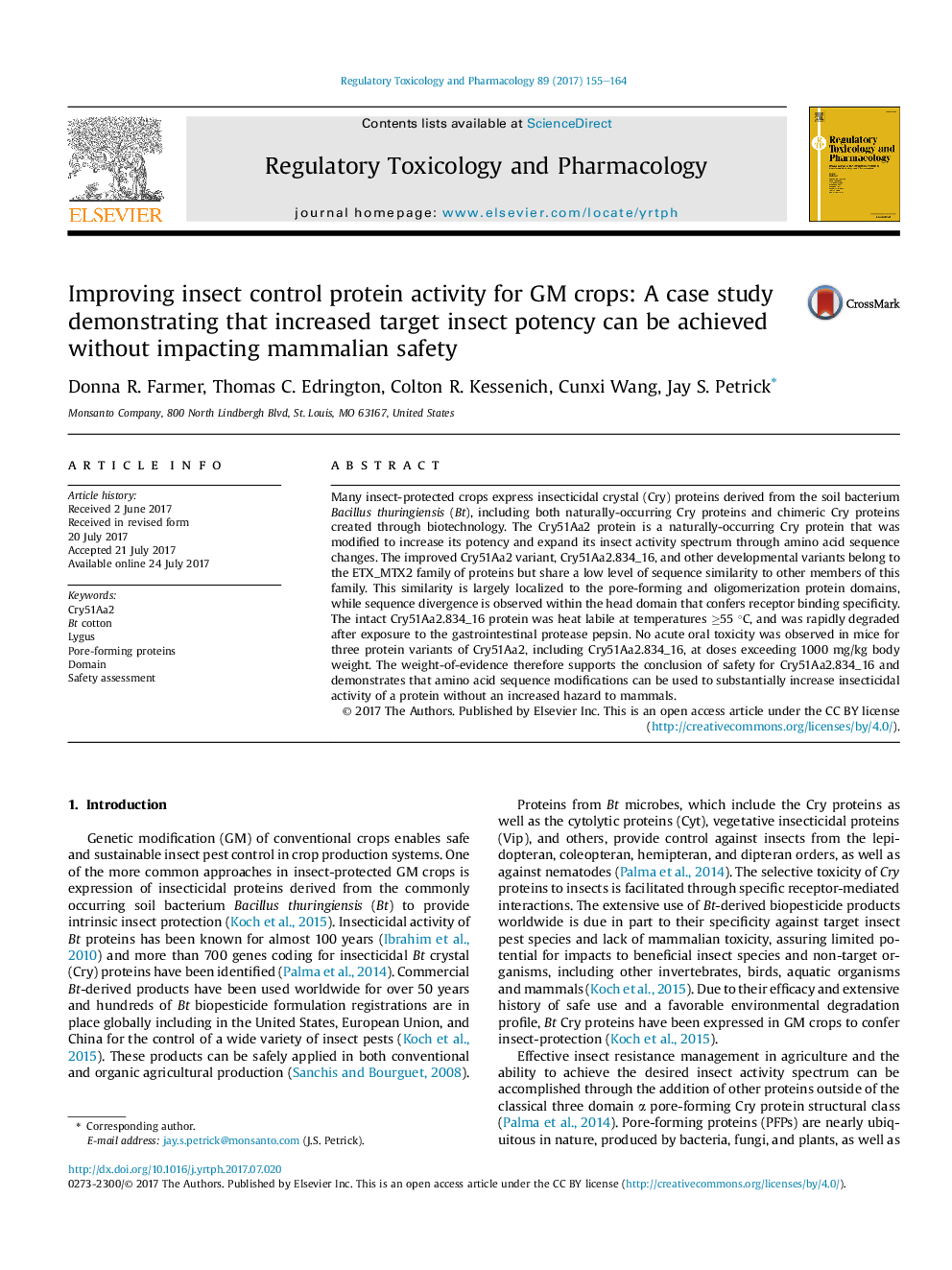| Article ID | Journal | Published Year | Pages | File Type |
|---|---|---|---|---|
| 5561195 | Regulatory Toxicology and Pharmacology | 2017 | 10 Pages |
â¢Cry51Aa2.834_16 protein confers hemipteran and thysanopteran pest control in cotton.â¢This protein was modified to selectively enhance insect control activity/spectrum.â¢Cry51Aa2.834_16 was readily digested by pepsin and heat labile at ⥠55 °C.â¢Cry51Aa2.834_16 was not acutely toxic to mammals.â¢The weight of the evidence supports food and feed safety of Cry51Aa2.834_16.
Many insect-protected crops express insecticidal crystal (Cry) proteins derived from the soil bacterium Bacillus thuringiensis (Bt), including both naturally-occurring Cry proteins and chimeric Cry proteins created through biotechnology. The Cry51Aa2 protein is a naturally-occurring Cry protein that was modified to increase its potency and expand its insect activity spectrum through amino acid sequence changes. The improved Cry51Aa2 variant, Cry51Aa2.834_16, and other developmental variants belong to the ETX_MTX2 family of proteins but share a low level of sequence similarity to other members of this family. This similarity is largely localized to the pore-forming and oligomerization protein domains, while sequence divergence is observed within the head domain that confers receptor binding specificity. The intact Cry51Aa2.834_16 protein was heat labile at temperatures â¥55 °C, and was rapidly degraded after exposure to the gastrointestinal protease pepsin. No acute oral toxicity was observed in mice for three protein variants of Cry51Aa2, including Cry51Aa2.834_16, at doses exceeding 1000 mg/kg body weight. The weight-of-evidence therefore supports the conclusion of safety for Cry51Aa2.834_16 and demonstrates that amino acid sequence modifications can be used to substantially increase insecticidal activity of a protein without an increased hazard to mammals.
